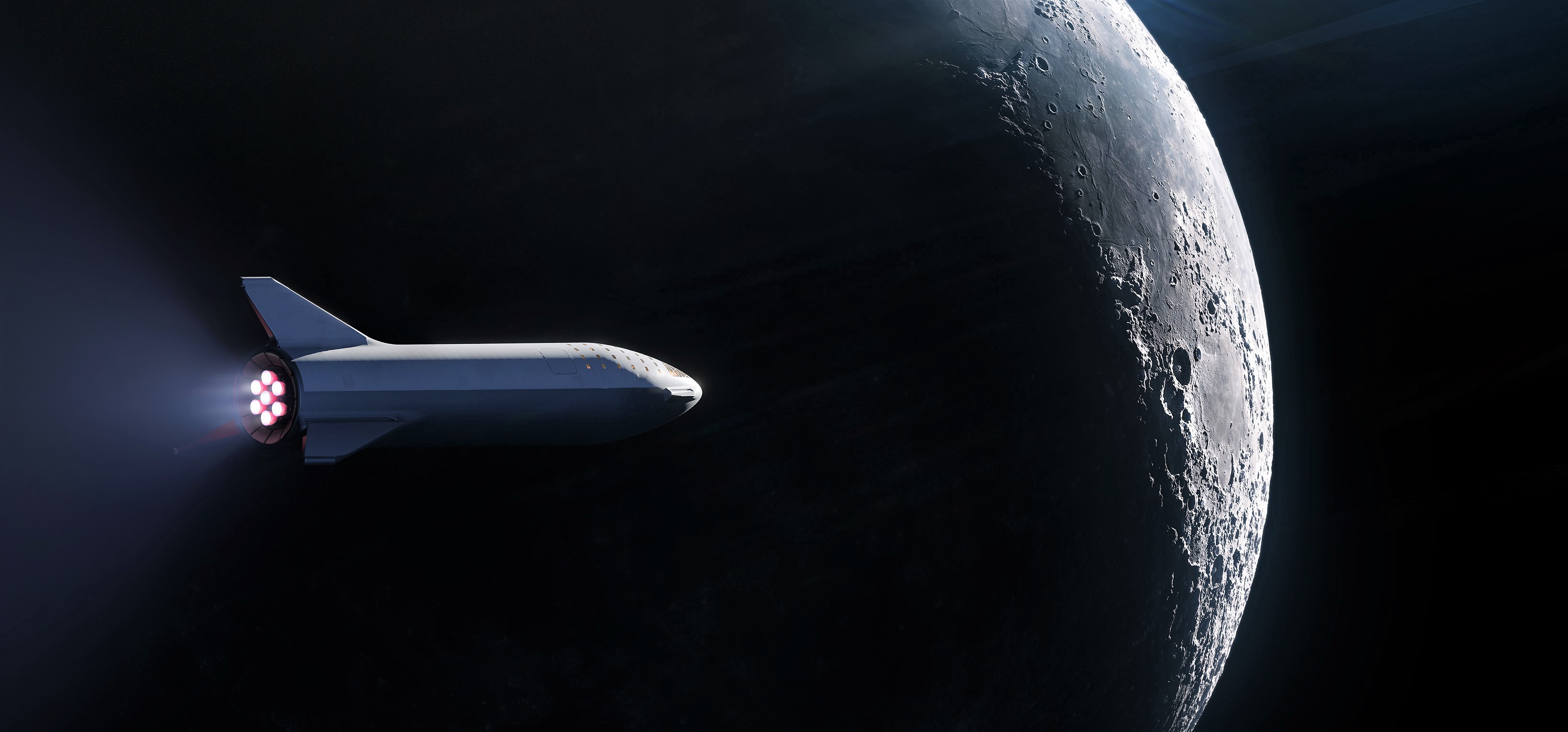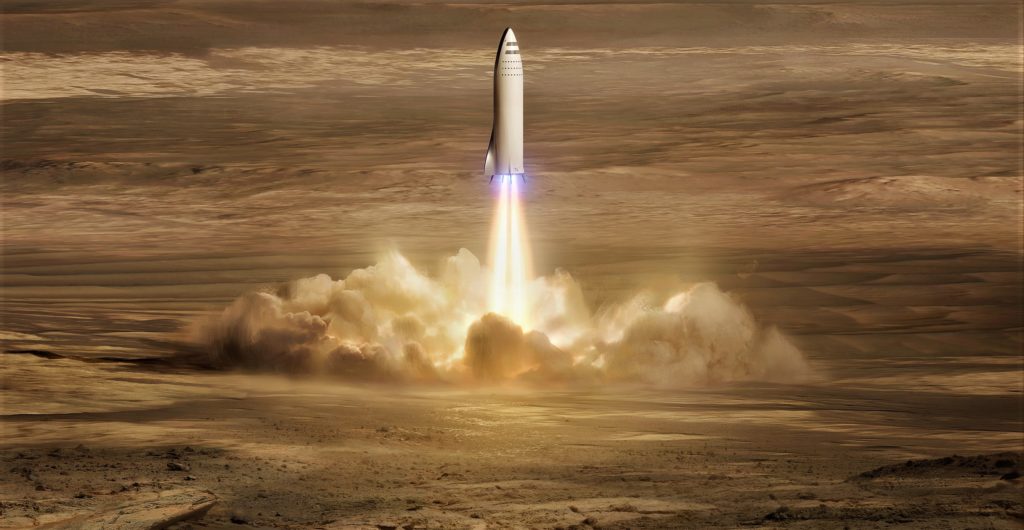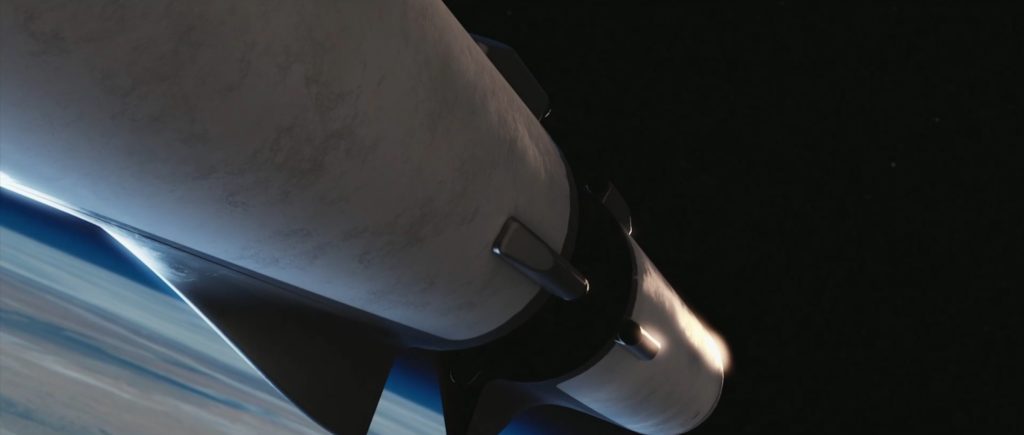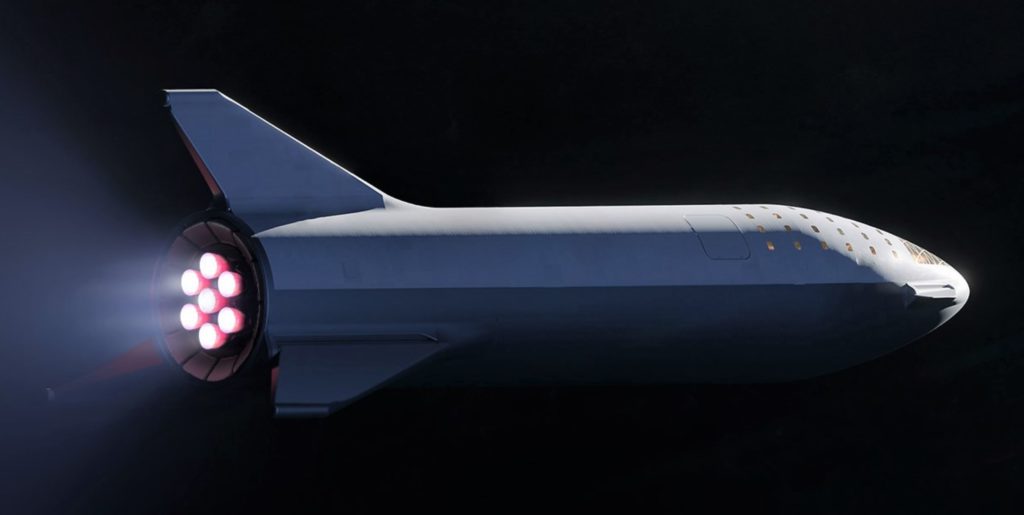

News
SpaceX has signed a private passenger for the first BFR launch around the Moon
SpaceX has officially announced that it has signed a private customer for what may be the first BFR launch to the Moon, ETA and the individual question currently undetermined.
Included with the announcement was a topical rendering that appears to show an updated BFR spaceship performing a burn of seven Raptor engines (apparently all of sea level variants) around the Moon, confirmed by CEO Elon Musk in a Twitter reply to be indicative of a new version of the next-generation SpaceX rocket.
SpaceX has signed the world’s first private passenger to fly around the Moon aboard our BFR launch vehicle—an important step toward enabling access for everyday people who dream of traveling to space. Find out who’s flying and why on Monday, September 17. pic.twitter.com/64z4rygYhk
— SpaceX (@SpaceX) September 14, 2018
Nearly overshadowing SpaceX’s intriguing lunar tourism contract, the photo included with official announcement features a BFR spaceship (BFS for short) that has rather dramatically departed from SpaceX renders of BFR and BFS dating back to late 2017 and early 2018. Most notably, the spaceship’s delta wing has been removed in its entirety, replaced by a triangular layout of three fins and what appear to be forward canards (control surfaces most commonly used to improve aerodynamic stability). Those apparent canards could also potentially act as a sort of stand in to the grid fins present on both BFR and Falcon boosters.
This new render also implies a logical relocation of the ship’s landing legs from external pods to the tips of its new wings, and may even betray some sort of hinge mechanism on the bottom two wins, perhaps meant to allow BFS to safely land on its trio of wingtips while still preserving the inherent aerodynamic stability of BFR 2017’s delta-wing.
- SpaceX’s 2017 BFR looks far different that the vehicle shown in the company’s updated 2018 render. (SpaceX)
- Note the 2017/early-2018 variant’s single delta-wing and extendable leg pods (silver). (SpaceX)
- A September 2018 render of Starship (then BFS) shows one of the vehicle’s two hinged wings/fins/legs. (SpaceX)
Finally, the most significant change is found at the spaceship’s rear, where a new configuration of seven Raptor engines – by all appearances the version of the engine optimized for sea level performance – is surrounded by a mysterious ring of white or grey panels, perhaps a form of heat-shielding or maybe something else entirely. The lack of vacuum-optimized Raptors is arguably the most surprising feature of this unexpected announcement, either pointing to some sort of brash ‘artistic license’ (less likely given Musk’s tweet response) or a drastic departure from traditional rocket design, doing away with expanded vacuum nozzles for some more exotic solution.
A mystery hitchhiker
Musk also cryptically responded to a Tweet implying he was probably the mystery passenger, posting a Japanese flag emoji that strongly points towards Softbank founder and CEO Masayoshi Son as the prime candidate for this (circum?)lunar launch. Through his influential Softbank Vision Fund (SVF), essentially a $100 billion pool of money that is being gradually invested in certain companies and ideas, Masayoshi Son has become a force to be reckoned with in technology industries, and is believed to have invested a staggering $1.5 billion alone in prospective satellite internet constellation OneWeb.
Yes
— Elon Musk (@elonmusk) September 14, 2018
As such, it would be far from surprising if Masayoshi Son – who purchased a ~$120 million Californian mansion in 2013 – has chosen to purchase one (or perhaps the only) seat aboard a circumlunar launch of SpaceX’s BFR booster and spaceship, an appreciable risk of life and limb that could cost on the order of $100 million – plus or minus $50 million – depending on how SpaceX is approaching this development. More likely than not, this proposed BFR launch is a slight modification of an already-planned experimental test flight, one that SpaceX has apparently found ways to partially subsidize thanks to an eccentric private individual or group interested in hitchhiking (at a cost).
Time will tell, and SpaceX is planning a much more detailed announcement – evidenced by a livestream event posted on the company’s website – around 6pm PDT on Monday, September 17th. With a little luck, this could be Elon Musk’s previously mentioned BFR update mixed with an unexpected space tourism launch contract.
For prompt updates, on-the-ground perspectives, and unique glimpses of SpaceX’s rocket recovery fleet check out our brand new LaunchPad and LandingZone newsletters!
Elon Musk
Why Tesla’s Q3 could be one of its biggest quarters in history
Tesla could stand to benefit from the removal of the $7,500 EV tax credit at the end of Q3.

Tesla has gotten off to a slow start in 2025, as the first half of the year has not been one to remember from a delivery perspective.
However, Q3 could end up being one of the best the company has had in history, with the United States potentially being a major contributor to what might reverse a slow start to the year.
Earlier today, the United States’ House of Representatives officially passed President Trump’s “Big Beautiful Bill,” after it made its way through the Senate earlier this week. The bill will head to President Trump, as he looks to sign it before his July 4 deadline.
The Bill will effectively bring closure to the $7,500 EV tax credit, which will end on September 30, 2025. This means, over the next three months in the United States, those who are looking to buy an EV will have their last chance to take advantage of the credit. EVs will then be, for most people, $7,500 more expensive, in essence.
The tax credit is available to any single filer who makes under $150,000 per year, $225,000 a year to a head of household, and $300,000 to couples filing jointly.
Ending the tax credit was expected with the Trump administration, as his policies have leaned significantly toward reliance on fossil fuels, ending what he calls an “EV mandate.” He has used this phrase several times in disagreements with Tesla CEO Elon Musk.
Nevertheless, those who have been on the fence about buying a Tesla, or any EV, for that matter, will have some decisions to make in the next three months. While all companies will stand to benefit from this time crunch, Tesla could be the true winner because of its sheer volume.
If things are done correctly, meaning if Tesla can also offer incentives like 0% APR, special pricing on leasing or financing, or other advantages (like free Red, White, and Blue for a short period of time in celebration of Independence Day), it could see some real volume in sales this quarter.
You can now buy a Tesla in Red, White, and Blue for free until July 14 https://t.co/iAwhaRFOH0
— TESLARATI (@Teslarati) July 3, 2025
Tesla is just a shade under 721,000 deliveries for the year, so it’s on pace for roughly 1.4 million for 2025. This would be a decrease from the 1.8 million cars it delivered in each of the last two years. Traditionally, the second half of the year has produced Tesla’s strongest quarters. Its top three quarters in terms of deliveries are Q4 2024 with 495,570 vehicles, Q4 2023 with 484,507 vehicles, and Q3 2024 with 462,890 vehicles.
Elon Musk
Tesla Full Self-Driving testing continues European expansion: here’s where
Tesla has launched Full Self-Driving testing in a fifth European country ahead of its launch.

Tesla Full Self-Driving is being tested in several countries across Europe as the company prepares to launch its driver assistance suite on the continent.
The company is still working through the regulatory hurdles with the European Union. They are plentiful and difficult to navigate, but Tesla is still making progress as its testing of FSD continues to expand.
Today, it officially began testing in a new country, as more regions open their doors to Tesla. Many owners and potential customers in Europe are awaiting its launch.
On Thursday, Tesla officially confirmed that Full Self-Driving testing is underway in Spain, as the company shared an extensive video of a trip through the streets of Madrid:
Como pez en el agua …
FSD Supervised testing in Madrid, Spain
Pending regulatory approval pic.twitter.com/txTgoWseuA
— Tesla Europe & Middle East (@teslaeurope) July 3, 2025
The launch of Full Self-Driving testing in Spain marks the fifth country in which Tesla has started assessing the suite’s performance in the European market.
Across the past several months, Tesla has been expanding the scope of countries where Full Self-Driving is being tested. It has already made it to Italy, France, the Netherlands, and Germany previously.
Tesla has already filed applications to have Full Self-Driving (Supervised) launched across the European Union, but CEO Elon Musk has indicated that this particular step has been the delay in the official launch of the suite thus far.
In mid-June, Musk revealed the frustrations Tesla has felt during its efforts to launch its Full Self-Driving (Supervised) suite in Europe, stating that the holdup can be attributed to authorities in various countries, as well as the EU as a whole:
Tesla Full Self-Driving’s European launch frustrations revealed by Elon Musk
“Waiting for Dutch authorities and then the EU to approve. Very frustrating and hurts the safety of people in Europe, as driving with advanced Autopilot on results in four times fewer injuries! Please ask your governing authorities to accelerate making Tesla safer in Europe.”
Waiting for Dutch authorities and then the EU to approve.
Very frustrating and hurts the safety of people in Europe, as driving with advanced Autopilot on results in four times fewer injuries!
Please ask your governing authorities to accelerate making Tesla safer in Europe. https://t.co/QIYCXhhaQp
— Elon Musk (@elonmusk) June 11, 2025
Tesla said last year that it planned to launch Full Self-Driving in Europe in 2025.
Elon Musk
xAI’s Memphis data center receives air permit despite community criticism
xAI welcomed the development in a post on its official xAI Memphis account on X.

Elon Musk’s artificial intelligence startup xAI has secured an air permit from Memphis health officials for its data center project, despite critics’ opposition and pending legal action. The Shelby County Health Department approved the permit this week, allowing xAI to operate 15 mobile gas turbines at its facility.
Air permit granted
The air permit comes after months of protests from Memphis residents and environmental justice advocates, who alleged that xAI violated the Clean Air Act by operating gas turbines without prior approval, as per a report from WIRED.
The Southern Environmental Law Center (SELC) and the NAACP has claimed that xAI installed dozens of gas turbines at its new data campus without acquiring the mandatory Prevention of Significant Deterioration (PSD) permit required for large-scale emission sources.
Local officials previously stated the turbines were considered “temporary” and thus not subject to stricter permitting. xAI applied for an air permit in January 2025, and in June, Memphis Mayor Paul Young acknowledged that the company was operating 21 turbines. SELC, however, has claimed that aerial footage shows the number may be as high as 35.
Critics are not giving up
Civil rights groups have stated that they intend to move forward with legal action. “xAI’s decision to install and operate dozens of polluting gas turbines without any permits or public oversight is a clear violation of the Clean Air Act,” said Patrick Anderson, senior attorney at SELC.
“Over the last year, these turbines have pumped out pollution that threatens the health of Memphis families. This notice paves the way for a lawsuit that can hold xAI accountable for its unlawful refusal to get permits for its gas turbines,” he added.
Sharon Wilson, a certified optical gas imaging thermographer, also described the emissions cloud in Memphis as notable. “I expected to see the typical power plant type of pollution that I see. What I saw was way worse than what I expected,” she said.
-

 Elon Musk3 days ago
Elon Musk3 days agoTesla investors will be shocked by Jim Cramer’s latest assessment
-

 News1 week ago
News1 week agoTesla Robotaxi’s biggest challenge seems to be this one thing
-

 News2 weeks ago
News2 weeks agoTexas lawmakers urge Tesla to delay Austin robotaxi launch to September
-

 Elon Musk2 weeks ago
Elon Musk2 weeks agoFirst Look at Tesla’s Robotaxi App: features, design, and more
-

 Elon Musk2 weeks ago
Elon Musk2 weeks agoxAI’s Grok 3 partners with Oracle Cloud for corporate AI innovation
-

 News2 weeks ago
News2 weeks agoSpaceX and Elon Musk share insights on Starship Ship 36’s RUD
-

 News2 weeks ago
News2 weeks agoWatch Tesla’s first driverless public Robotaxi rides in Texas
-

 News2 weeks ago
News2 weeks agoTesla has started rolling out initial round of Robotaxi invites




















